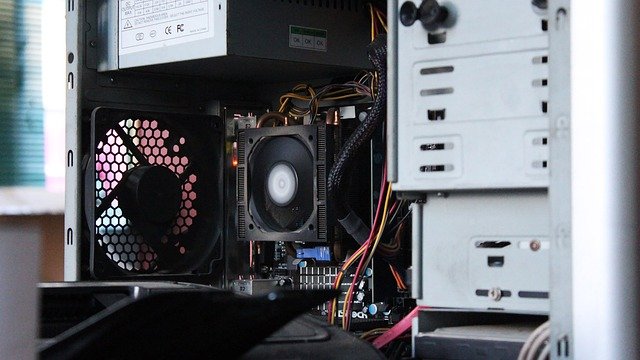Identifying Warranty and Repair Options in International Markets
When buying or moving computers and electronics across borders, understanding warranty and repair options can prevent costly delays and compatibility problems. International coverage, local service availability, and documentation requirements vary by manufacturer and country; proactively checking warranty terms, authorized centers, and repair policies helps maintain performance and reduce downtime.

How do hardware repairs and diagnostics work abroad?
Hardware repairs and diagnostics often depend on whether a product has international warranty coverage or is tied to a specific region. Local services may perform diagnostics that identify failed components—such as storage, memory, or cooling systems—and recommend repairs or part replacements. Authorized service centers usually follow manufacturer protocols and maintain parts inventories, while independent technicians can offer faster turnaround in some areas but may use non-OEM parts, which can affect long-term compatibility and warranty status.
When seeking diagnostics and repairs, carry proof of purchase and serial numbers and ask whether the service center logs repair history. Confirm whether prior third-party repairs void manufacturer warranty clauses, and request detailed diagnostic reports so that performance issues can be tracked over time.
What software support, firmware, and drivers are available?
Software support and firmware updates are critical to device security and functionality, but availability can be region-dependent. Manufacturers may provide global downloads for firmware and drivers, while some software support services operate only in certain countries or languages. Remote diagnostics and software updates can often be delivered online, but firmware updates may require specific local versions to match power, connectivity, or regulatory profiles.
Before applying firmware or driver updates in a new market, back up data and check release notes for compatibility with local networks or peripherals. Use official channels for downloads to avoid counterfeit drivers, and verify that vendor accounts allow access to global support resources when traveling or relocating.
How to assess compatibility and connectivity in other countries?
Assessing compatibility covers both hardware and software elements: power specifications, regional firmware, network standards, and peripheral interfaces. Power (voltage and frequency) and plug types vary; some devices accept a wide range but others need converters. Connectivity considerations include Wi‑Fi bands, cellular frequencies, and router compatibility; devices manufactured for one region might not support every local band or roaming profile.
Prepare a checklist that includes power rating checks, router and SIM compatibility for mobile devices, keyboard layouts, and language settings. Confirm that essential drivers and connectivity software are available for the local market and whether manufacturer firmware supports the country’s regulatory requirements.
What maintenance, upgrades, and performance services exist?
Maintenance services in international markets range from basic cleaning and thermal maintenance to performance upgrades such as additional RAM, SSD installs, or improved cooling solutions. Authorized centers typically follow manufacturer guidelines for upgrades to preserve warranty terms, while specialized shops may offer tailored performance tuning and hardware modifications. Regular maintenance—dust removal, thermal paste renewal, and firmware updates—helps sustain optimal performance and reduces the likelihood of unexpected failures.
When planning upgrades, verify part compatibility and driver support for your device model. Ask service providers to run diagnostics before and after upgrades to ensure the intended performance gains are realized without introducing stability or compatibility issues.
How to manage cooling, power, and backup requirements?
Environmental conditions affect cooling needs and power stability. In hotter climates, cooling solutions (improved airflow, better heat sinks, or upgraded fans) and monitoring firmware that adjusts thermal profiles become more important. Power irregularities can damage components; using a UPS, surge protector, or voltage regulator can protect systems designed for different mains voltages.
Backup strategies should combine local and cloud options: regular image backups before firmware updates, offsite data replication, and testing restores in the destination environment. Confirm that backup software and hardware (external drives, NAS devices) are supported and have compatible power and connectivity options in the local market.
How are recycling and long-term repairs handled locally?
Recycling regulations and e‑waste programs differ considerably by country. Some manufacturers and retailers offer take‑back or trade‑in programs internationally, while certified recyclers handle safe disposal of batteries, circuit boards, and hazardous materials. For long-term repairs, parts availability can be a limiting factor: older models may require importing parts or shipping units back to regions with adequate inventories.
Document repair histories and retain any service receipts to facilitate cross‑border warranty claims or part replacements. If long-term local support is limited, consider extended or international warranty plans at purchase time, and research local authorized partners who can source OEM parts and provide consistent maintenance.
Conclusion
Identifying warranty and repair options in international markets requires a combination of advance research and practical preparation: review warranty language for territorial limits, confirm authorized service centers and parts availability, safeguard firmware and driver sources, and plan for power, cooling, and backup needs. Maintaining documentation and choosing compatible parts and certified providers helps preserve device performance and reduces the risk of interrupted service across borders.





